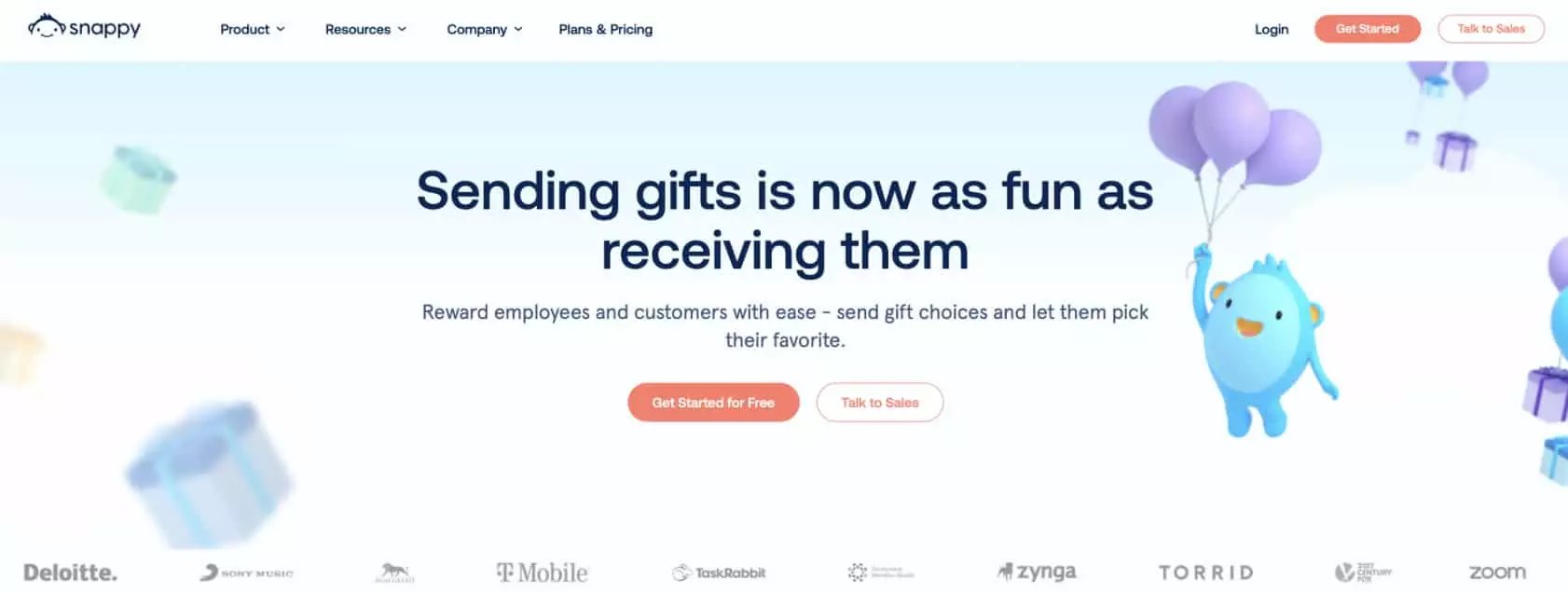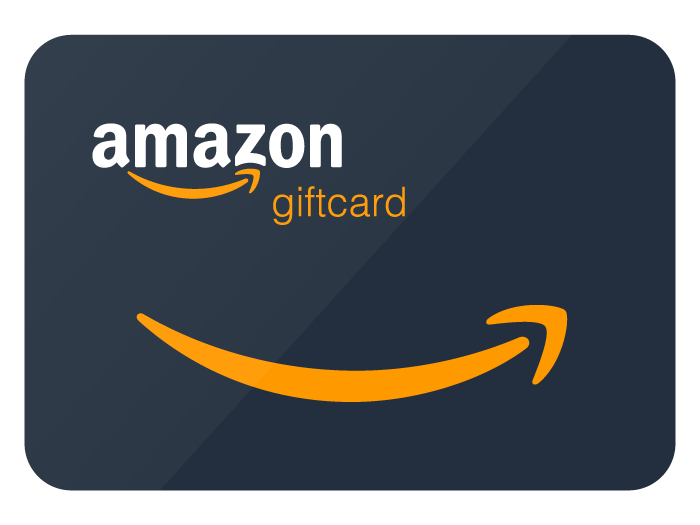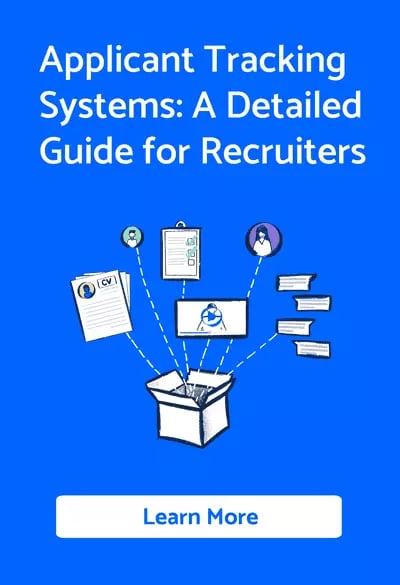Have you experienced low engagement and a decline in productivity among your team? The members are not motivated as they used to be, feel burned out all the time, and no longer contribute ideas or take the initiative. If that’s the case, it can be a serious concern.
Motivation is the fuel that keeps employees going. When they feel motivated and energised, they work hard and bring success. But if they lack motivation, even the best performers don’t perform well. Productivity takes a dip, and even the most successful businesses suffer heavy losses.
How to keep team members motivated and engaged? A great work culture can help, but it alone wouldn’t be sufficient. Employee incentive programs are needed to encourage them from time to time. So, what can you do to offer employee incentives? We’re here with a list of things you can do as an SMB. You can start by reading about them below. Let’s begin:
Seven employee incentive ideas to boost the morale of your team members
It can be tricky to decide which employee incentive programs are efficient and which aren’t. If you don’t know from where you start, here are some ways to incentivise employees that always work:
1. Financial employee incentive programs
Everybody loves a little extra cash. According to a Genesis Associates survey, 85% of employees feel that monetary incentives encourage them to work hard and put in the extra effort. Hence, offering a financial employee incentive program can create a motivational goal for your employees and increase productivity, employee retention, and employee engagement.
To ensure the success of financial incentives among your staff, you will need to ensure they can quickly redeem them. Employees may show disinterest in financial incentives if they don’t benefit in some way.
Here are some financial employee incentive program ideas you can consider:
Snappy
Snappy is a rewards platform for your employees.

You can easily let your team choose a gift they want as a reward for their performance or longevity. It just makes the rewards process simple and saves you a bunch of time. In fact, we Snappy is so useful for SMBs it made it into this list of top HR software for small business.
Digital gift cards

Employees prefer digital gift cards like Amazon, VISA, Bestbuy, or Google Play vouchers because they’re easy to redeem and let a team member choose how to spend them.
You can take digital gift cards further by tailoring them according to user preferences. For example, if someone loves reading, you can offer them a discount or vouchers for buying novels. On the other hand, if someone is into fitness, you can offer them a gym membership discount.
You can use a gift service like Awardco if the whole idea of customising gifts sounds time-consuming. It can automate everything for you.
Redeemable reward points

If executed carefully, the whole idea of reward points as employee incentives can be engaging. It is because reward points have a monetary value attached to them, and your staff can redeem them according to their needs and priorities.
Reward points also have a gamification aspect, adding a different excitement level. Consider it a healthy competition where an employee would want to perform better than other team members to earn more reward points that they can redeem later to buy gifts, merchandise, or other rewards.
To make the most of redeemable reward points, ensure you’re offering diverse gift choices and flexibility to redeem points at will. You can also use redeemable platforms like WorkTango, Motivosity, and Workstars to reward employees.
Monthly allowances
If reward points and digital gifts seem too daunting, you can offer monthly allowances to boost employee morale. You can offer a stipend to cover the cost of their travel, gym memberships, professional development, food, etc. It shows that you don’t just treat them as a workforce but care for their well-being. When your staff feels that their well-being is a concern for you, they’re more committed to the success of your business.
On-spot cash rewards
65% of employees prefer immediate rewards and recognition for their effort instead of getting paid gift cards or monthly allowances at the end of the month. Hence, on-spot cash bonuses can be effective morale boosters. They can generate excitement, motivate employees to work hard, and enhance productivity.
Be quick when offering on-the-spot cash rewards. Also, make sure you do them in front of everyone so that other team members can also get motivated and work towards pursuing similar achievements.
Home office budget
Most employees love working from home. However, few are keen on spending their salary on setting up a home office. Hence, many still work from the couch, plastic chairs, or even their bed. Eventually, it leads to issues like cervical pain.
By offering a home office budget, you can help your staff customise their home office without spending their salary. It would help them greatly because home office equipment, computers, and an internet connection can be expensive. By covering these costs, you can help them become more productive.

You can make the home office budget even more remarkable for your team by sending something special, like wall art or a plant to decorate their home office. You can also send them company swag (electronic gadgets, T-shirts, notebooks, or pens with the company logo) on special occasions.
Downsides of financial employee incentive programs
Monetary employee incentives can be efficient. However, they also have a few downsides, such as:
- Short-term focus: Financial incentives may motivate your staff to focus on short-term goals, such as meeting targets, rather than long-term goals, such as improving overall performance.
- Decreased intrinsic motivation: Financial incentives can decrease an employee’s motivation to perform well. When people feel like they are doing something for a reward, they may lose interest in the task.
- Unintended consequences: Monetary incentives can lead to unintended consequences, such as many members engaging in unethical behaviour to earn a bonus.
- Limited effectiveness: Financial incentives may not be effective for all staff. Some may not be motivated by money, while others may have different priorities.
- Cost: Financial incentive programs can be costly for the company to implement and maintain.
2. Non-financial employee incentive programs
Financial incentives can be a powerful motivator for some employees, but it doesn’t work for everyone. To motivate such members who aren’t motivated by financial incentives, you must consider a non-financial employee incentive program.
Non-financial employee incentive ideas
Here are a few non-financial employee incentive program ideas you can use to motivate your employees:
- Recognise employees for their effort. It would make them feel appreciated and valued for their contribution through awards, recognitions, wall of fame, etc.
- Offer your staff opportunities to grow and learn new skills. It would make them feel engaged and invested in their work.
- Give your staff the freedom to make decisions and take ownership of their work. It would instil a sense of purpose and belonging in them.
- Encourage team spirit and collaboration through team-building activities and events. It can help team members feel more connected to their colleagues and the company.
Benefits of non-financial employee incentive programs
Non-financial incentives can be effective in different ways for motivating teams. Here are some compelling benefits of non-financial employee incentives:
- Non-financial incentives can keep employees engaged and motivated.
- By focusing on incentives that are not monetary, employers can create a work culture that encourages teams to perform at their best.
- Non-financial incentives such as flexibility, autonomy, and positive work culture can help your staff feel more satisfied with their jobs. This can lead to lower turnover rates and increased company loyalty.
- Implementing non-financial incentives can help to create a positive and supportive company environment. This can improve employee morale, foster collaboration and teamwork, and attract top talent to the company.
- Non-monetary incentives are often less expensive to implement than financial incentives. Hence, small and medium-sized companies can easily offer them.
- Non-financial incentives such as training and development opportunities have a long-term impact on employee performance and satisfaction.
Drawbacks of non-financial employee incentive programs
Non-financial employee incentives have the following drawbacks:
- Not everyone is motivated by non-financial incentives. For some, recognition or peace of mind may not matter as much as monetary rewards.
- Measuring the effectiveness of non-financial incentives can be difficult.
- It may not be possible to implement non-financial incentives in some industries. For example, you can’t offer a flexible work schedule or work from home in the real estate business.
- Implementing and maintaining non-financial incentives can be time-consuming. Employee recognition programs or team-building activities require significant planning and coordination.
- Some non-financial incentives, such as autonomy, recognition, and growth opportunities, depend on company values. Some companies may promise but might not be able to provide them, leaving even the best employees demotivated.
3. Flexible working arrangements
Teams put in more effort when you don’t bind them in regular working hours or confine them in office space. Let them work from their comfort space as per their schedule, and you will realise they’re much more productive.
Flexible working arrangements and employee incentive programs
Here are a few flexible working employee incentive ideas that you can offer:
- Remote work: Let your staff work from home or another location outside of the office on certain days for the month.
- Flexible schedule: Allow team members to have flexible hours, within certain parameters set by the company.
- Part-time work: Let employees work on a reduced schedule, such as 4 days a week or half-days.
- Compressed workweek: Let your staff work longer days in fewer days, such as 4 ten-hour days instead of 5 eight-hour days.
- Phased retirement: Allow team members nearing retirement age to gradually reduce their hours and responsibilities over time.
- Unpaid leave: Let employees take a leave of absence for a certain time, with the option to return to their job at the end of the leave.
- Casual dress day: HR professionals can cut some slack for your team on some days and have everyone dress casually.
Benefits of flexible work employee incentive ideas
Flexible work arrangement employee incentive program can have the following benefits:
- It would make your staff feel valued, and they would put more effort into their work.
- Team members can better manage their professional and personal life as there would be less stress and chaos.
- You can retain more employees as most people want to work from home post the COVID pandemic.
- Your staff can better devote the time they otherwise had to spend in long commutes. It is especially helpful in cities where it takes 1-2 hours to reach the office due to traffic jams.
Downsides of flexible work employee incentives
Flexible work arrangements can be effective. However, there are a few downsides to employee incentive programs that you must consider, such as:
- Communication and collaboration is a challenges among remote teams.
- Managers may have to spend more time coordinating and communicating with remote or part-time team members, which can add to their workload.
- Team members may have difficulty separating their work and personal lives while working from home, leading to burnout and decreased productivity.
- When teams are working remotely or on different schedules, it can be harder for them to build relationships with one another and create a sense of community within the company.
- Remote workers may have limited access to in-person training and development opportunities provided by the company.
- It can be harder to evaluate the performance of remote workers or those working on flexible schedules.
To ensure these drawbacks don’t become a challenge while offering flexible work arrangements, keep them in mind and take necessary actions to mitigate them. These actions can be developing clear communication protocols, providing regular check-ins, and setting clear expectations for performance.
4. Professional development opportunities
The lack of professional growth is the black hole that sucks the happiness of even the most brilliant employees. When team members feel they’re not learning anything new on a job, they quit and look for opportunities elsewhere.
Hence, you must offer your employees professional development opportunities like training, mentorship, attending industry conferences, online courses, tuition reimbursement, and stretch assignments. It would help your employees achieve professional growth, allowing you to keep them motivated and retain them for a long time.
Benefits of professional growth employee incentives
Here are some other benefits of professional growth opportunities:
- You can help your team acquire new skills and knowledge to improve job performance and productivity by providing opportunities for professional growth.
- You are more likely to attract highly skilled and motivated staff by offering professional growth opportunities.
- Investing in employee development can help you stay competitive as you have a skilled and knowledgeable workforce.
- When you invest in your employees’ professional and personal growth, they feel you care for them. Hence, you’re more loyal and satisfied.
However, professional growth opportunities can be costly as you have to cover the costs of training courses or conferences. They also remove their focus as staff feel divided between training and work. Besides, the employees who couldn’t access the growth opportunities can grow resentful and quit.
To minimise these downsides, companies can create well-structured programs that are budget-friendly, impactful, and inclusive. Additionally, regular feedback and evaluations can help companies assess the effectiveness of their professional growth initiatives.
5. Employee recognition

Recognising and praising top performers for their hard work and achievements can be a powerful motivator. It is essential because employees are more likely to be engaged and motivated when they feel valued and appreciated for their contributions.
Employee recognition can be in the form of a formal rewards program, a public acknowledgement, a wall of fame, or a simple thank-you note.
Benefits of employee recognition
Praising your employees for their contribution can:
- Improve morale and job satisfaction
- Increase employee motivation and productivity
- Enhance employee engagement
- Improve retention rates
- Offer your employees a greater sense of achievement and accomplishment
- Help you forge better relationships between employees and management.
- Enhance your reputation as a desirable employer.
While employee recognition can be a powerful way of incentivising employees, it can also foster favoritism and unfairness - leading to ineffective management. Ultimately, it may negatively impact the dynamics within your leadership team. Hence, you must handle employee recognition carefully.
Best employee recognition practices
Here are a few tips for nailing your employee recognition strategy:
- Communicate the recognition program to avoid confusion.
- Keep the evaluation criteria consistent and transparent.
- Focus on individual and team achievements to avoid favouritism.
- Keep a mix of tangible and intangible rewards to cater to the needs of all employees.
6. Health and well-being programs
Health has a significant effect on the performance of your staff. When they’re unwell or not in the right frame of mind, they can neither focus on their work nor not perform their duties diligently. Hence, it would be best if you offered your employees incentives related to health and wellness.
A few health & well-being employee incentive ideas
Here are a few health and wellness incentives you can offer to your employees:
- Fitness challenges and gym memberships
- Employees’ health screenings and biometric testing
- Onsite wellness classes (e.g., yoga, meditation)
- Health coaching and counselling services
- Healthy food options in the workplace
- Smoking cessation programs
- Mental health support and resources
- Ergonomic assessments and equipment
- Stress management workshops
- Financial wellness workshops and resources.
Benefits of health and wellness programs
Here’s how health and wellness programs can help employees:
- The better physical and mental health of employees
- Increased job satisfaction and productivity
- Reduced absenteeism and turnover
- A positive environment where’s everyone’s committed to growth.
Health and wellness programs are a great idea. Their only downside is that sometimes only a small number of employees are interested in them. Some may hate going to the gym, even if it’s for free. To encourage such employees, you can integrate the health and wellness program with a reward system that rewards workers who have hit wellness milestones.
7. Create a positive company culture
While the employee incentives we shared above are crucial to motivate and retain employees, nothing can beat a positive environment.
The company culture is essential because it surrounds employees and shapes the individual during their stint in the company. The culture decides whether the employees will emerge as leaders or disgruntled individuals who barely wait for the salary deposited in their account at the end of the month. Hence, the company should focus on establishing a positive environment.
A few ideas to create a positive company culture
Here are a few things you can do to establish a positive work culture in your company:
- Lead by example: Model the values and behaviours you want to promote.
- Communicate openly and transparently: promote two-way communication and encourage feedback.
- Provide recognition and rewards: acknowledge and reward employees for their contributions and successes.
- Emphasise work-life balance: Promote flexible work arrangements and encourage employees to take time off.
- Foster teamwork and collaboration: Encourage employees to work together and build relationships. The core values of teamwork and leadership can take you a long way.
- Invest in employee development: Provide training and career growth opportunities for employees. It leads to increased staff retention.
- Promote diversity and inclusivity: Motivate positive behaviours. Respect and value differences and create a welcoming environment for all employees.
- Encourage healthy habits: Promote physical and mental wellness in the workplace.
Benefits of a positive company culture
Here’s how a positive company environment would benefit employees:
- Increased job satisfaction as people love working in a company that makes them feel valued.
- Better employee retention as employees prefer staying in companies that treat them well.
- You attract top talent, as many talented individuals look for a positive work environment while searching for a job.
- Increased productivity as employees work harder when they enjoy their work environment and have great relationships with co-workers.
Drawbacks of a Company Culture
While creating a positive work culture is a brilliant move, and it should be on the priority list of every company, it also has several downsides, such as:
- The cost of implementing cultural initiatives is sometimes high.
- Measuring and maintaining a positive culture is not easy.
- Managing conflicts and differing opinions can be a daunting task.
- Too high expectations can make employees feel burned out and demotivated.
Overall, establishing a positive work culture is not easy. You need to balance company values with business goals and productivity, which is not easy. But with practice, you can nail it.
Conclusion
The corporate space is busy and hypercompetitive. Here, every second counts. In some industries, even a few seconds’ delay can cost millions.
But sometimes, in this quest to complete projects, achieve milestones, and make profits, we may forget that people working for us also bleed, feel tired, have self-doubt, and lack motivation. When we ignore this and only focus on making profits, we pay the price in terms of poor productivity and heavy losses.
Demotivated employees show disinterest and make mistakes. But when their morale is high, they achieve even the most impossible tasks. Hence, you must motivate your employees through incentives and reward programs.
Hopefully, the blog we shared above gave you enough idea of how to motivate your team and maximise productivity by offering employee incentives. Now, it’s time to implement this knowledge into practice and start incentives in your organisation. Best of luck!!
What incentives do employees want the most?
While exact priorities of incentives may vary from person to person, many employees generally like a mix of:
- Financial compensation (salary, bonuses, sales quotas, profit sharing plan)
- Benefits (health insurance, free food, retirement plans)
- Career development opportunities (training, growth potential)
- Work-life balance (flexible work hours, paid time off, company picnics, recreational activities in conference room)
- Recognition and appreciation (praise, awards)
- A sense of purpose and fulfillment (mission-driven work, meaningful impact)
What is a good employee incentive for employees?
- Monetary bonuses: Who doesn’t like to earn extra cash?
- Stock options & profit sharing schemes: A great way to engage employees and keep them loyal to your company.
- Paid time off: Getting paid on vacation is every employee’s dream.
- Professional development opportunities: We all want to stay where we grow. Be it work or our relationships.
- Recognition and rewards programs: Recognize their efforts, and they’ll go all in for you.
- Flexible work arrangements: Everyone loves the comfort of working from anywhere, as per their schedule.
- Health and wellness benefits: A healthy individual is a lot more productive, and an entire team battles personal demons and health issues.
- Work-life balance: We all have a life outside of work. Recognize and respect that, and employees will respect you.
Can you give some examples of an employee incentive Program?
- Monetary rewards (e.g. bonuses, commissions, and profit sharing)
- Non-monetary rewards (e.g. time off, recognition, wall of fame)
- Contributions to the retirement account
- Subsidies or tax breaks
- Discounts or promotions
- Access to exclusive products or services
- Training or development opportunities
- Health and wellness programs
- Flexible work arrangements
- Stock options or equity awards
- Employee referral programs





